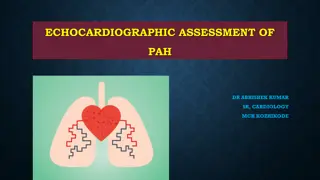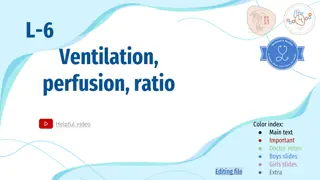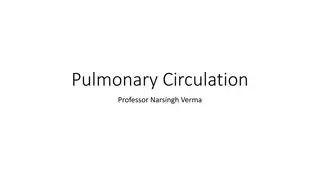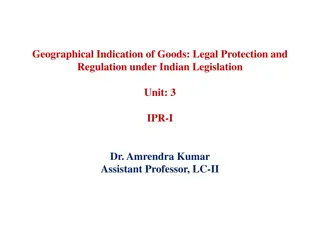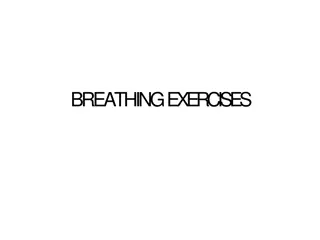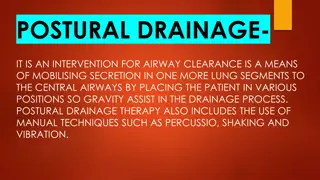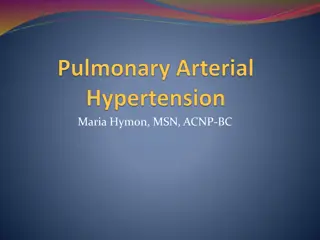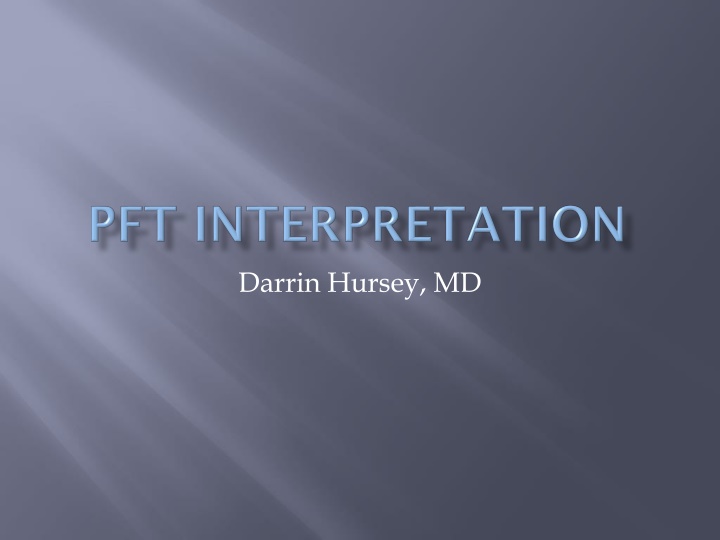
Pulmonary Function Testing: Indications, Evaluation, and Interpretation
This content covers the indications for performing pulmonary function tests, a brief review of relevant pulmonary physiology, interpretation schemes, evaluation of chronic dyspnea for asthma or COPD, and pre-operative assessments. It explains concepts such as tidal volume, lung capacities, test validity, obstruction assessment (FEV1/FVC ratio), and restriction assessment (FVC < 80% predicted). The content aims to provide a comprehensive overview of PFTs and their clinical applications in respiratory medicine.
Download Presentation

Please find below an Image/Link to download the presentation.
The content on the website is provided AS IS for your information and personal use only. It may not be sold, licensed, or shared on other websites without obtaining consent from the author. If you encounter any issues during the download, it is possible that the publisher has removed the file from their server.
You are allowed to download the files provided on this website for personal or commercial use, subject to the condition that they are used lawfully. All files are the property of their respective owners.
The content on the website is provided AS IS for your information and personal use only. It may not be sold, licensed, or shared on other websites without obtaining consent from the author.
E N D
Presentation Transcript
Indications for performing PFTs Brief review of relevant pulmonary physiology Interpretation scheme
Evaluation of chronic dyspnea (looking specifically for asthma or COPD) Monitoring for response to therapy for asthma or COPD Pre-operative evaluation
Murray and Nadels Textbook of Respiratory Medicine, 6th Edition
Vt = tidal volume IRV = inspiratory reserve volume ERV = expiratory reserve volume RV = residual volume
IC = inspiratory capacity = Vt +IRV FRC = functional residual capacity = ERV + RV TLC = total lung capacity = FRC + IC
First, ensure test is valid Patient must exhale for 6 seconds for test to be valid Read therapist s notes to make sure patient was able to perform the test properly Make sure the test is reproducible Spirometry, lung volumes, flow-volume loop, and DLCO are then evaluated
Assess for obstruction by looking at the FEV1/FVC ratio FEV1/FVC <0.7 consistent with obstruction If obstruction present, severity is graded by FEV1 %predicted >80% = mild = GOLD I 50-80% = moderate = GOLD II 30-49% = severe = GOLD III <30% = very severe = GOLD IV
Next, assess for restriction by looking at FVC FVC < 80% predicted suggests restriction (assuming FEV1/FVC >0.7) Lung volumes are needed to verify TLC <80% predicted verifies restriction
If FEV1/FVC <0.7, but FVC also reduced, this is probably due to hyperinflation and air- trapping. Need lung volumes to verify Normal TLC (especially with elevated RV) verifies hyperinflation TLC <80% consistent with mixed defect
Murray and Nadels Textbook of Respiratory Medicine, 6th Edition
Murray and Nadels Textbook of Respiratory Medicine, 6th Edition
Assesses gas exchange Must be adjusted for hemoglobin level Can also be adjusted for alveolar volume Can add diagnostic information, but is difficult to perform and can be quite variable
Decreased DLCO with normal spirometry suggests pulmonary vascular disease, pulmonary embolism, or combined ILD + emphysema Decreased DLCO with obstruction suggests emphysema rather than asthma
Normal DLCO with restriction suggests neuromuscular weakness, chest wall deformity, etc. rather than ILD Elevated DLCO seen in asthma and pulmonary hemorrhage
Broaddus, VC, Mason, RJ, Ernst, JD, King, TE, Lazarus, SC, Murray, FJ, Nadel, JA, Slutsky, AS, Gotway, MB 2015 Murray & Nadel s Textbook of Respiratory Medicine, 6th edition, Elsevier Saunders, Philadelphia PA. R. Pellegrino, G. Viegi, V. Brusasco, R.O. Crapo, F. Burgos, R. Casaburi, A. Coates, C.P.M. van der Grinten, P. Gustafsson, J. Hankinson, R. Jensen, D.C. Johnson, N. MacIntyre, R. McKay, M.R. Miller, D. Navajas, O.F. Pedersen and J. Wanger2005 Intepretive strategies for lung function tests Eur Respir J, 26, 948 968

